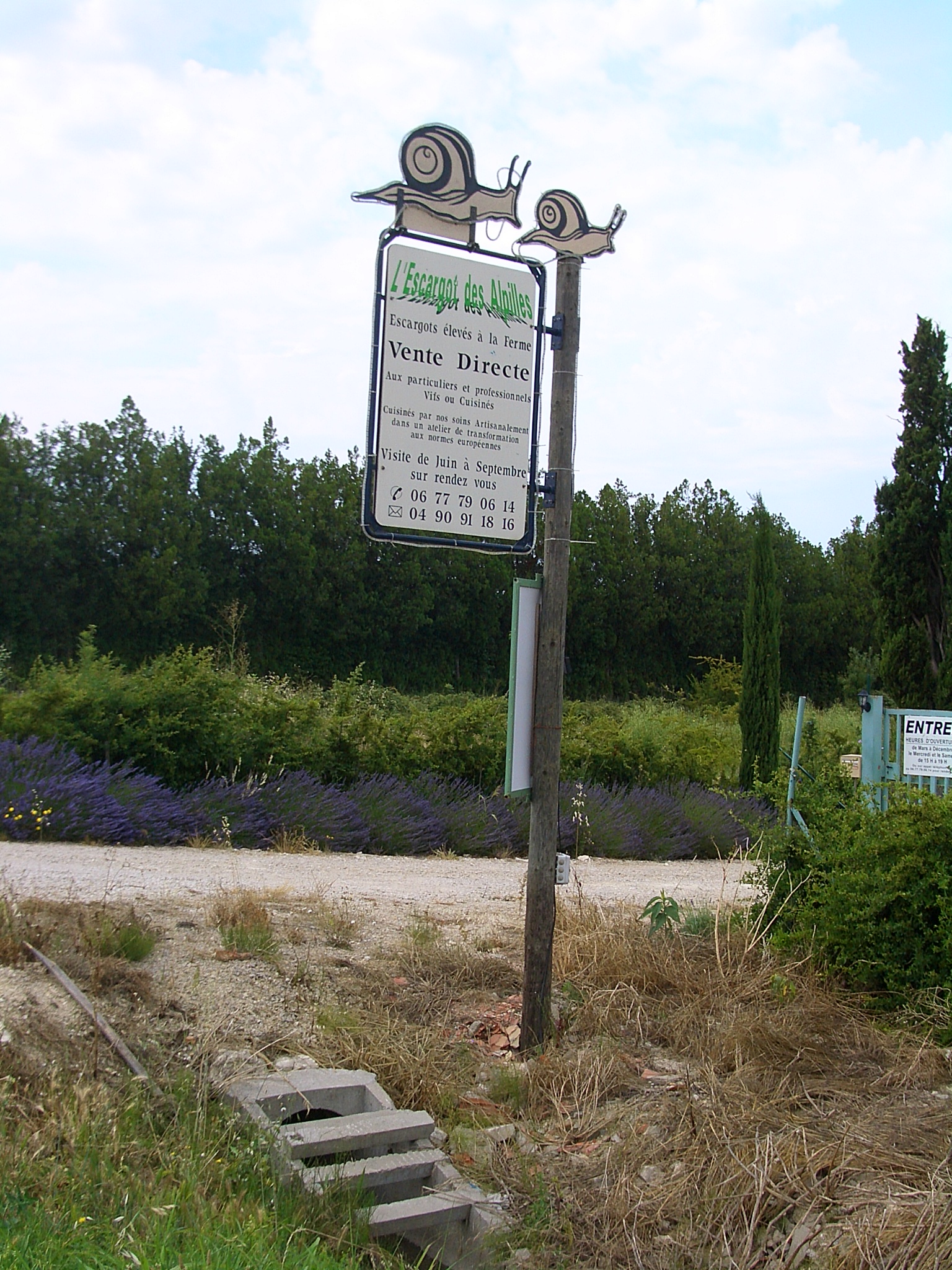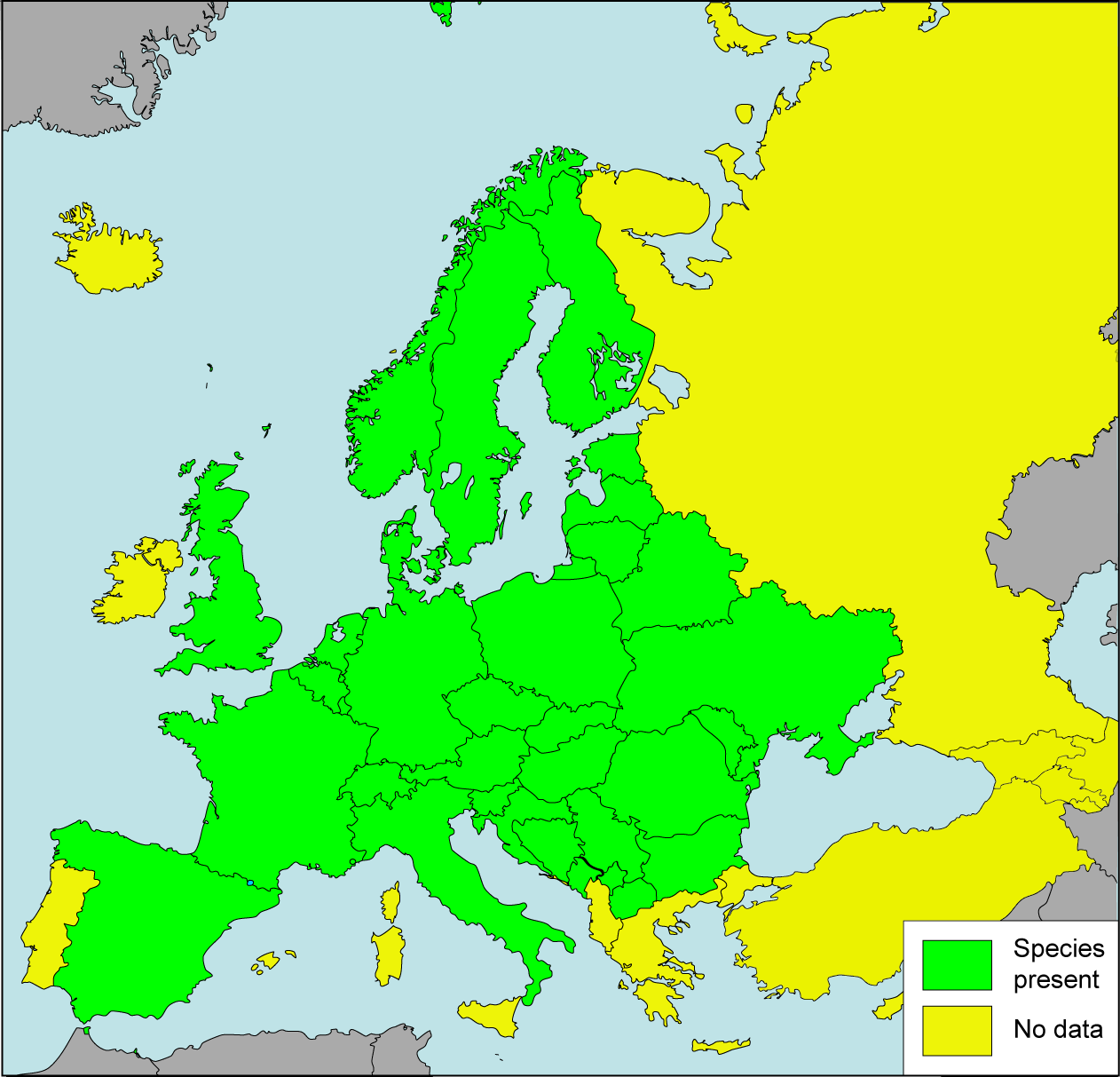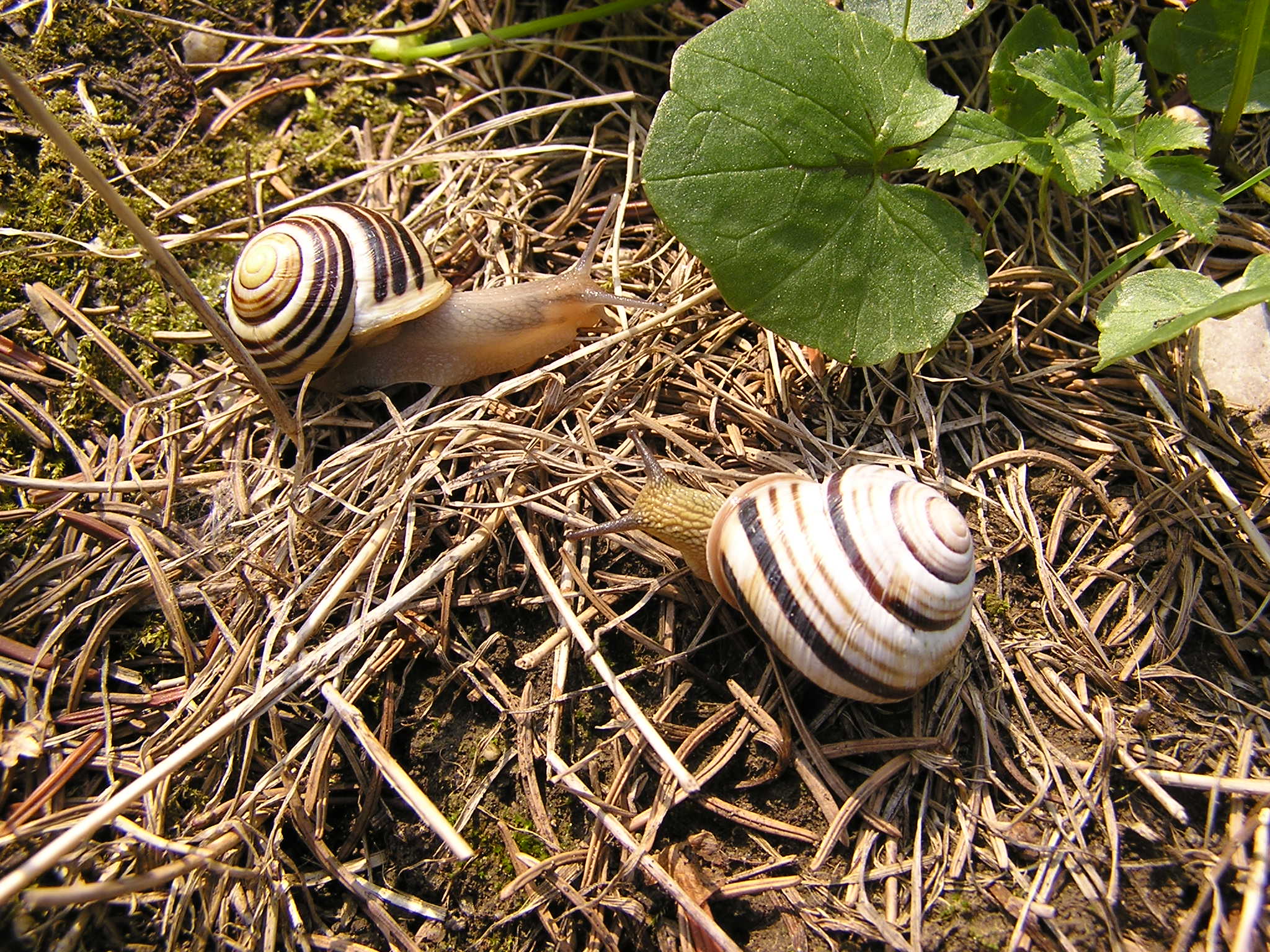|
Heliciculture
Heliciculture, commonly known as snail farming, is the process of raising edible land snails, primarily for human consumption or cosmetic use. The meat and snail eggs a.k.a. ''white caviar'' can be consumed as escargot and as a type of caviar, respectively. Perhaps the best-known edible land snail species in the Western world is ''Helix pomatia'', commonly known as the Roman snail or the Burgundy snail. This species, however, is not fit for profitable snail farming, and is normally harvested from nature. Commercial snail farming in the Western world is typically done with ''Cornu aspersum'' (morphotypically divided into ''C. a. aspersa'' and ''C. a. maxima''), formerly known as ''Helix aspersa.'' In tropical climates, snail farming is typically done with the African snail, which biologically does not fall in the family Helicidae, so the meat of which may not be called escargot. History Roasted snail shells have been found in archaeological excavations, an indication that sna ... [...More Info...] [...Related Items...] OR: [Wikipedia] [Google] [Baidu] |
Quintus Fulvius Lippinus
Quintus Fulvius Lippinus, Fulvius Lippinus for short (aka Fulvius Hirpinius) was an enterprising Roman farmer from the first century BC. He lived in the Roman region of Tarquinia, today's Italian Tuscany. His dealings are described in the ''Rerum rusticarum libri III'' by Marcus Terentius Varro, and a century later in Pliny the Elder's ''Natural History (Pliny), Naturalis Historia''. Wild animal husbandry Fulvius Lippinus owned a domain of forty Jugerum, jugera in the vicinity of Tarquinia, a large domain in Statona, and some domains elsewhere. In these areas he had farms where methods were developed for keeping game such as hares, deer, and wild sheep. Lippinus was the first Roman to create game parks for keeping wild boar and pig, among others Snail breeding However, Lippinus gained most fame by keeping and Heliciculture, breeding snails. He built the first parks in Tarquinia, shortly before the civil war broke out between Pompey and Cæsar. With the construction and exploita ... [...More Info...] [...Related Items...] OR: [Wikipedia] [Google] [Baidu] |
Helix Pomatia
''Helix pomatia'', common names the Roman snail, Burgundy snail, or escargot, is a species of large, edible, air-breathing land snail, a pulmonate gastropod terrestrial mollusc in the family Helicidae.MolluscaBase eds. (2021). MolluscaBase. Helix pomatia Linnaeus, 1758. Accessed through: World Register of Marine Species at: http://marinespecies.org/aphia.php?p=taxdetails&id=1050286 on 2021-02-19 It is one of Europe's biggest species of land snail. Distribution Distribution of ''H. pomatia'' includes: Southeast Europe, Southeastern and Central Europe: * List of non-marine molluscs of Germany, Germany – listed as a specially protected species in annex 1 of the Bundesartenschutzverordnung. * List of non-marine molluscs of Austria, Austria * List of non-marine molluscs of the Czech Republic, Czech Republic – least concern species (LC): Its conservation status in 2004–2006 is favourable (FV) in the report for the European Commission in accordance with the Habitats Directive ... [...More Info...] [...Related Items...] OR: [Wikipedia] [Google] [Baidu] |
Land Snail
A land snail is any of the numerous species of snail that live on land, as opposed to the sea snails and freshwater snails. ''Land snail'' is the common name for terrestrial gastropod mollusks that have shells (those without shells are known as slugs). However, it is not always easy to say which species are terrestrial, because some are more or less amphibious between land and fresh water, and others are relatively amphibious between land and salt water. Land snails are a polyphyletic group comprising at least ten independent evolutionary transitions to terrestrial life (the last common ancestor of all gastropods was marine). The majority of land snails are pulmonates that have a lung and breathe air. Most of the non-pulmonate land snails belong to lineages in the Caenogastropoda, and tend to have a gill and an operculum. The largest clade of land snails is the Cyclophoroidea, with more than 7,000 species. Many of these operculate land snails live in habitats or microha ... [...More Info...] [...Related Items...] OR: [Wikipedia] [Google] [Baidu] |
Escargot
Snails are considered edible in many areas such as the Mediterranean region, Africa, or Southeast Asia, while in other cultures, snails are seen as a taboo food. In American English, edible land snails are also called escargot, taken from the French word for 'snail,' and the production of snails for consumption is called snail farming or heliciculture. Snails as a food date back to ancient times, with numerous cultures worldwide having traditions and practices that attest to their consumption. The snails are collected after the rains and are put to "purge" (fasting). In the past, the consumption of snails had a marked seasonality, from April to June. However, thanks to snail breeding techniques, today they are available all year round. Heliciculture occurs mainly in Spain, France, and Italy, which are also the countries with the greatest culinary tradition of the snail. Although throughout history, the snail has had little value in the kitchen because it is considered "poverty foo ... [...More Info...] [...Related Items...] OR: [Wikipedia] [Google] [Baidu] |
Cepaea Nemoralis Pair Banded Shells
''Cepaea'' is a genus of medium-sized air-breathing land snails, terrestrial pulmonate gastropod mollusks in the family Helicidae. The shells of species within this genus are often brightly colored and patterned with stripes. The two species from this genus, the common and widespread ''C. nemoralis'' and ''C. hortensis'', have been model species for early studies of genetics and natural selection. They occur in Europe, although introduced populations occur elsewhere in the world. Like many Helicidae, this genus of snails create and use love darts. Species For a long time, four species were classified in the genus ''Cepaea''. However, molecular phylogenetic studies suggested that the latter two should be placed in the unrelated genera ''Macularia'' and ''Caucasotachea'': * ''Cepaea hortensis'' (O. F. Müller, 1774) – white-lipped snail or garden banded snail * ''Cepaea nemoralis'' (Linnaeus, 1758) – brown-lipped snail or grove snail * ''Cepaea sylvatica'' (Draparnaud, 1801 ... [...More Info...] [...Related Items...] OR: [Wikipedia] [Google] [Baidu] |
Cepaea Nemoralis
The grove snail, brown-lipped snail or Lemon snail (''Cepaea nemoralis'') is a species of air-breathing land snail, a terrestrial pulmonate gastropod mollusc. MolluscaBase eds. (2020). MolluscaBase. Cepaea nemoralis (Linnaeus, 1758). Accessed through: World Register of Marine Species at: http://marinespecies.org/aphia.php?p=taxdetails&id=235792 on 2020-07-31 It is one of the most common species of land snail in Europe, and has been introduced to North America. ;Subspecies: * ''Cepaea nemoralis etrusca'' (Rossmässler, 1835) * ''Cepaea nemoralis nemoralis'' (Linnaeus, 1758) ''Cepaea nemoralis'' is the type species of the genus ''Cepaea''. It is used as a model organism in citizen science projects. Description ''Cepaea nemoralis'' is among the largest and, because of its polymorphism and bright colours, one of the best-known snails in Western Europe. The colour of the shell of ''Cepaea nemoralis'' is very variable; it can be reddish, brownish, yellow or whitish, with or wi ... [...More Info...] [...Related Items...] OR: [Wikipedia] [Google] [Baidu] |
Iberus Alonensis
''Iberus alonensis'' is a species of gastropods belonging to the family Helicidae Helicidae is a large, diverse family of small to large, air-breathing land snails, sometimes called the "typical snails." A number of species in this family are valued as food items, including ''Cornu aspersum'' (formerly ''Helix aspersa'') the b .... The species is found in Spain. References alonensis Gastropods described in 1821 {{Helicidae-stub ... [...More Info...] [...Related Items...] OR: [Wikipedia] [Google] [Baidu] |
Roman Empire
The Roman Empire ( la, Imperium Romanum ; grc-gre, Βασιλεία τῶν Ῥωμαίων, Basileía tôn Rhōmaíōn) was the post- Republican period of ancient Rome. As a polity, it included large territorial holdings around the Mediterranean Sea in Europe, North Africa, and Western Asia, and was ruled by emperors. From the accession of Caesar Augustus as the first Roman emperor to the military anarchy of the 3rd century, it was a Principate with Italia as the metropole of its provinces and the city of Rome as its sole capital. The Empire was later ruled by multiple emperors who shared control over the Western Roman Empire and the Eastern Roman Empire. The city of Rome remained the nominal capital of both parts until AD 476 when the imperial insignia were sent to Constantinople following the capture of the Western capital of Ravenna by the Germanic barbarians. The adoption of Christianity as the state church of the Roman Empire in AD 380 and the fall of th ... [...More Info...] [...Related Items...] OR: [Wikipedia] [Google] [Baidu] |
Volubilis
Volubilis (; ar, وليلي, walīlī; ber, ⵡⵍⵉⵍⵉ, wlili) is a partly excavated Berber-Roman city in Morocco situated near the city of Meknes, and may have been the capital of the kingdom of Mauretania, at least from the time of King Juba II. Before Volubilis, the capital of the Kingdom may have been at Gilda. Built in a fertile agricultural area, it developed from the 3rd century BC onward as a Berber, then proto- Carthaginian, settlement before being the capital of the kingdom of Mauretania. It grew rapidly under Roman rule from the 1st century AD onward and expanded to cover about with a circuit of walls. The city gained a number of major public buildings in the 2nd century, including a basilica, temple and triumphal arch. Its prosperity, which was derived principally from olive growing, prompted the construction of many fine town-houses with large mosaic floors. The city fell to local tribes around 285 and was never retaken by Rome because of its remoteness ... [...More Info...] [...Related Items...] OR: [Wikipedia] [Google] [Baidu] |
Lissachatina Fulica
''Lissachatina fulica'' is a species of large land snail that belongs in the subfamily Achatininae of the family Achatinidae. It is also known as the Giant African land snail.''Achatina fulica''. Global Invasive Species Database. ISSG. IUCN. It shares the common name "giant African snail" with other species of snails such as '''' and '' Archachatina marginata''. This snail species has been considered a significant cause of pest issues around the world. Internationally, it is the most frequently occurring invasive species of snail. Outside of its native range, this snai ... [...More Info...] [...Related Items...] OR: [Wikipedia] [Google] [Baidu] |
Agricultural Research Service
The Agricultural Research Service (ARS) is the principal in-house research agency of the United States Department of Agriculture (USDA). ARS is one of four agencies in USDA's Research, Education and Economics mission area. ARS is charged with extending the nation's scientific knowledge and solving agricultural problems through its four national program areas: nutrition, food safety and quality; animal production and protection; natural resources and sustainable agricultural systems; and crop production and protection. ARS research focuses on solving problems affecting Americans every day. The ARS Headquarters is located in the Jamie L. Whitten Building on Independence Avenue in Washington, D.C. and the headquarters staff is located at the George Washington Carver Center (GWCC) in Beltsville, Maryland. For 2018, its budget was $1.2 billion. Mission ARS conducts scientific research for the American public. Their main focus is on research to develop solutions to agricultural ... [...More Info...] [...Related Items...] OR: [Wikipedia] [Google] [Baidu] |









